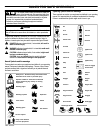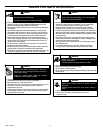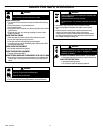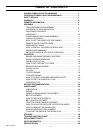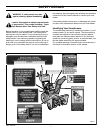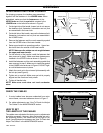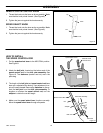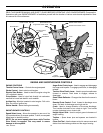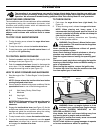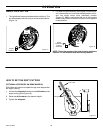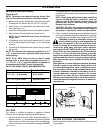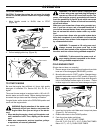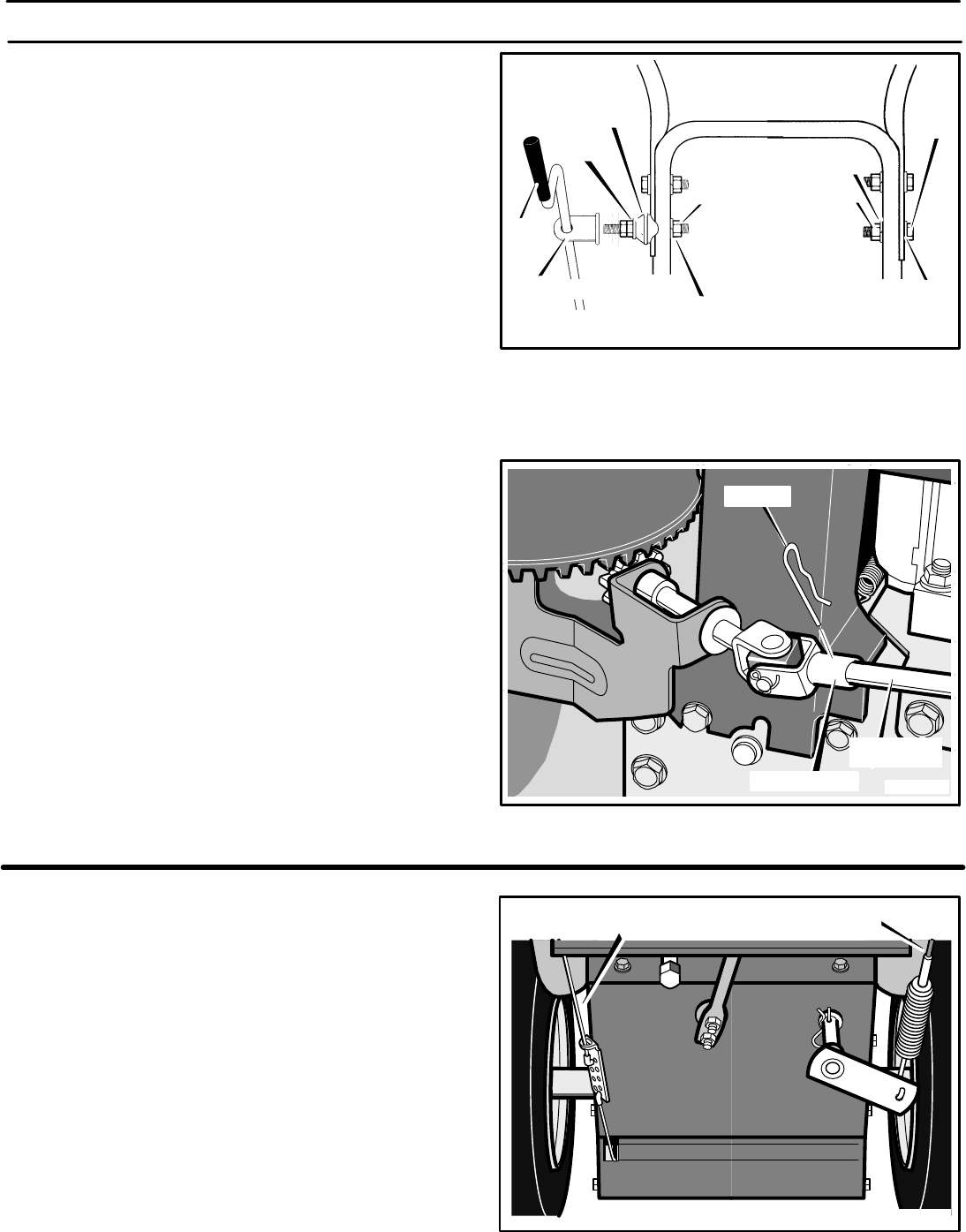
ASSEMBLY
11
MTF−051057L
UPPER HANDLE AND CRANK ASSEMBLY
For shipping purposes, the handles were assembled
together with the fasteners in the LOWER holes. When
assembled, make sure that the fasteners are in the
UPPER holes and that the eye bolt is mounted in the
LOWER hole on the left side as shown in Figure 5.
1. On the right side of the handle, loosen, but do not remove
the fasteners (bolt, flatwasher, lockwasher and nut) that
are assembled in the lower hole.
2. On the left side of the handle, remove the fasteners (bolt,
flatwasher, lockwasher and nut) that are assembled in
the LOWER holes.
3. Remove the fasteners and the crank assembly eyebolt
from the UPPER holes of the lower handle.
4. Raise upper handle into operating position. Upper han-
dle should be to the outside of the lower handle.
NOTE: Make sure the cables are not caught between
the upper and lower handle.
5. On the left side of the handle, install the fasteners that
were removed in step 2. Make sure these fasteners are
installed in the UPPER holes as shown in Figure 5.
6. Install the fasteners and the crank assembly eyebolt that
were removed in step 3. Make sure to install the eyebolt
in the LOWER holes as shown in Figure 5. DO NOT tight-
en until all fasteners are in place.
7. Attach the crank rod to the universal joint assembly with
the hair pin (see Figure 6).
8. Tighten nut on eye bolt. Make sure eye bolt is properly
aligned and the crank can freely rotate.
9. Tighten all handle bolts.
NOTE: Make sure crank does not touch carburetor
cover.
Figure 5
Crank
Eye Bolt
Adaptor Boot
Flatwasher
Nut
Flatwasher
Bolt
Lockwasher
Flatwasher
Locknut
Figure 6
Crank Rod
Assembly
Universal Joint
Hair Pin
CHECK THE CABLES
1. If control cables have become unattached from motor
mount frame, reconnect cables as shown in Figure 7.
2. For cable adjustments, see “How To Check And Adjust
The Cables” in the MAINTENANCE section.
HOW TO SET
THE LENGTH OF THE CABLES
The cables were adjusted at the factory and no adjustments
should be necessary. However, after the handles are put in
the operating position, the cables can be too tight or too
loose. If an adjustment is necessary, see “How To Check And
Adjust The Cables” in the MAINTENANCE section.
Traction Drive Cable
Auger Drive Cable
Figure 7



